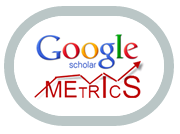REALIDADE AUMENTADA: TECNOLOGIAS INOVADORAS PARA O ENSINO EM ENGENHARIA E ARQUITETURA
Resumo
A Realidade Aumentada (RA) tem sido utilizada para unir objetos virtuais ao mundo real. Diversas áreas têm sido beneficiadas com sua aplicação; áreas como medicina e saúde, educação, ramo industrial, artes, entretenimento, arquitetura e construção civil, com foco nesta última, no projeto de edificações. Este artigo analisa as ferramentas de Código Aberto (OpenSource) de RA: SACRA, FLARToolKit e ARToolKit, para os projetos de edificações com foco no conceito Building Information Modeling (BIM). O projeto com BIM enfatiza o uso do Industry Foundation Classes (IFC) como padrão de troca de informações sobre os modelos possibilitando a utilização de softwares de vários fabricantes por parte dos projetistas concedendo mais liberdade ao projeto. O IFC é um padrão que difere da linguagem VRML (Virtual Reality Modeling Language), a qual é utilizada para a modelagem dos objetos virtuais na maior parte das ferramentas de RA. Para que os modelos exportados para IFC possam ser demonstrados pela RA é preciso a conversão destas linguagens, isto é, IFC para VRML. Realizaram-se testes de conversão completa de objetos com propriedades diferenciadas e avaliaram-se os pontos positivos e falhos em cada procedimento, obtendo-se as informações importantes e relatando-se os erros nos processos de conversão, detalhes das funcionalidades individuais de cada ferramenta e a indicação de quais dessas podem ser utilizadas em cada tipo de aplicação.
Palavras-chave: Realidade Aumentada, IFC, VRML.
AbstractAugmented Reality (AR) has been used to attach virtual objects in the real world. Several areas have been benefited by its application; areas such as medicine and health, education, industry, arts, entertainment, architecture and construction, focusing on the last, in building projects. This article analyzes the RA Open Source tools: SACRA, ARToolKit and FLARToolkit for the building project focus in on the concept Building Information Modeling (BIM). The BIM project emphasizes the use of file type Industry Foundation Classes (IFC) as a standard for exchanging information on the models allowing the use of software from various manufacturers by giving designers more freedom to the project. The IFC is a template that differs from VRML (Virtual Reality Modeling Language) which is used for the modeling of virtual objects in most RA tools. For those models exported to IFC can be demonstrated by RA is necessary to convert these languages, namely IFC to VRML. The tests that was made consists in complete conversion of objects with different properties and evaluated the strengths and flawed in every procedure, yielding important information and reporting is an indication of errors in conversion processes, details of individual features of each tool and an indication of which of these can be used in any application.
Keywords: Augmented Reality, IFC, VRML.
Texto completo:
PDFDOI: http://dx.doi.org/10.21902/RevPercurso.2316-7521.v2i17.1146
Apontamentos
- Não há apontamentos.
PERCURSO, e-ISSN: 2316-7521
Rua Chile, 1678, Rebouças, Curitiba/PR (Brasil). CEP 80.220-181


